Abstract
1. A pathway ascending in the lateral funiculus of the spinal cord and terminating as climbing fibres in the cerebellar anterior lobe has been investigated in decerebrate cats with the cord partially transected in the third cervical segment sparing only part of the left lateral funiculus. The climbing fibre responses evoked in Purkinje cells were studied by recording from single cells and by recording the mass activity at the cerebellar surface.
2. The pathway is activated by the flexor reflex afferents from all four limbs. It ascends in an area of the lateral funiculus which partly overlaps that of the dorsolateral spino-olivocerebellar path (Larson, Miller & Oscarsson, 1969) but also extends more ventrally. The pathway conducts relatively fast in the spinal cord and is considerably delayed in the brain stem suggesting several interneurones at that level. It projects to a narrow sagittal zone in lobule V of the pars intermedia (Fig. 4).
3. It is not known if the pathway relays in the inferior olive and it has provisionally been denoted the LF—CF—SCP (lateral funiculus—climbing fibre—spinocerebellar path).
4. The Purkinje cells were usually activated by the flexor reflex afferents from all four limbs with equal effectiveness. On natural stimulation responses were obtained on deep pressure of the limbs.
5. The pathway and its functional significance are discussed.
Full text
PDF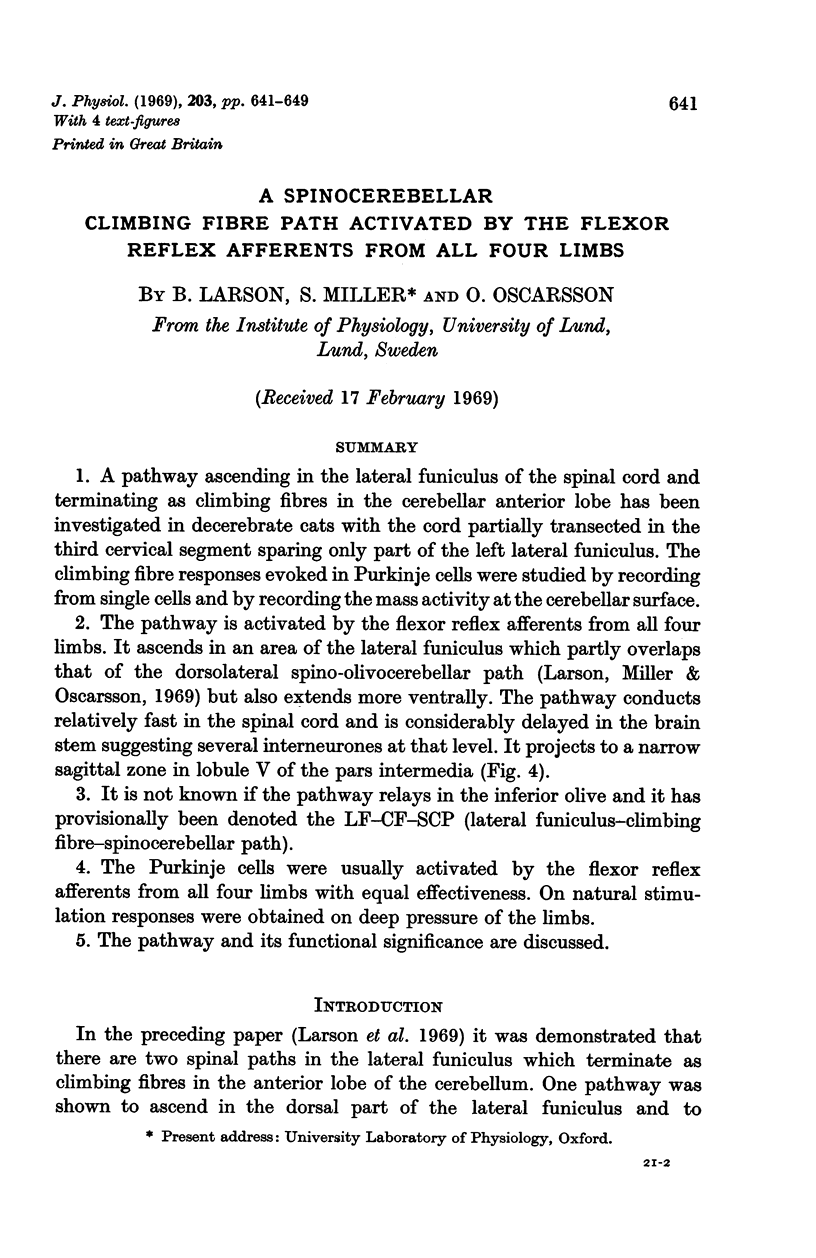
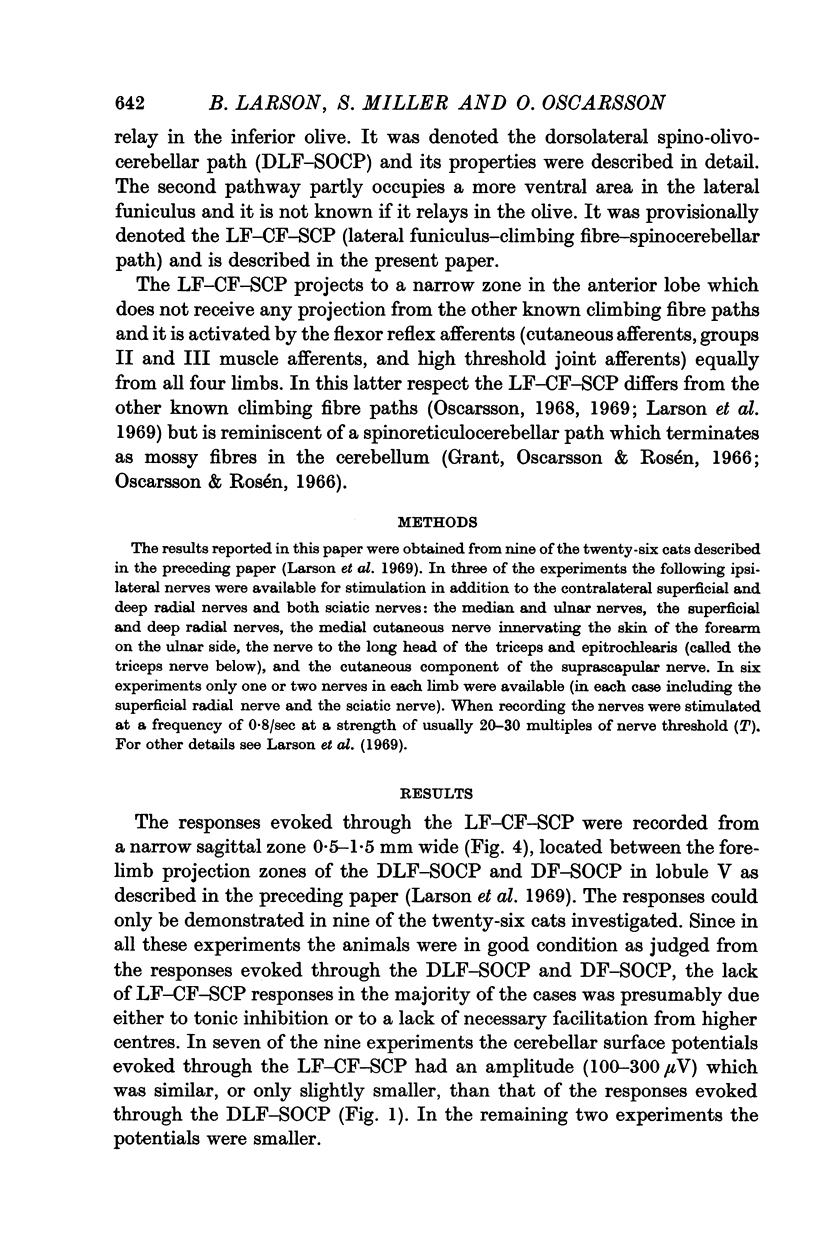
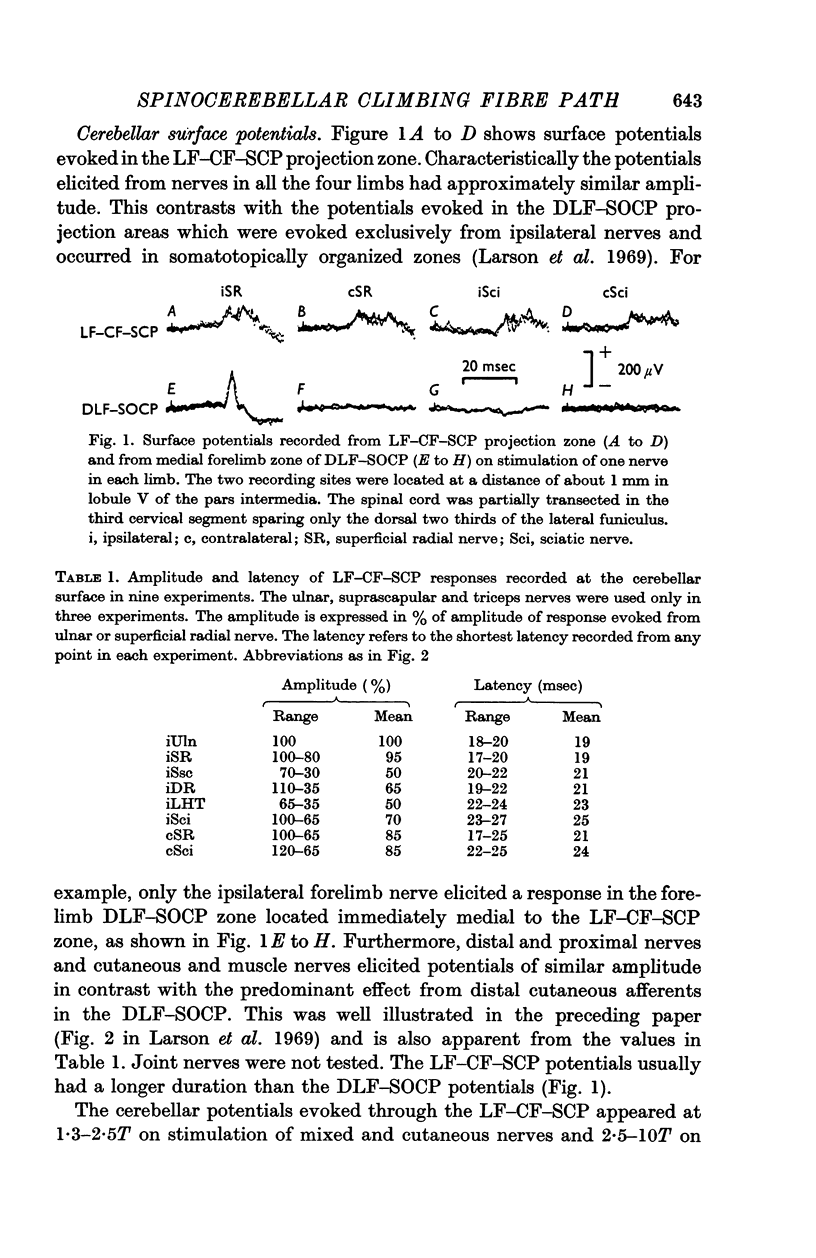
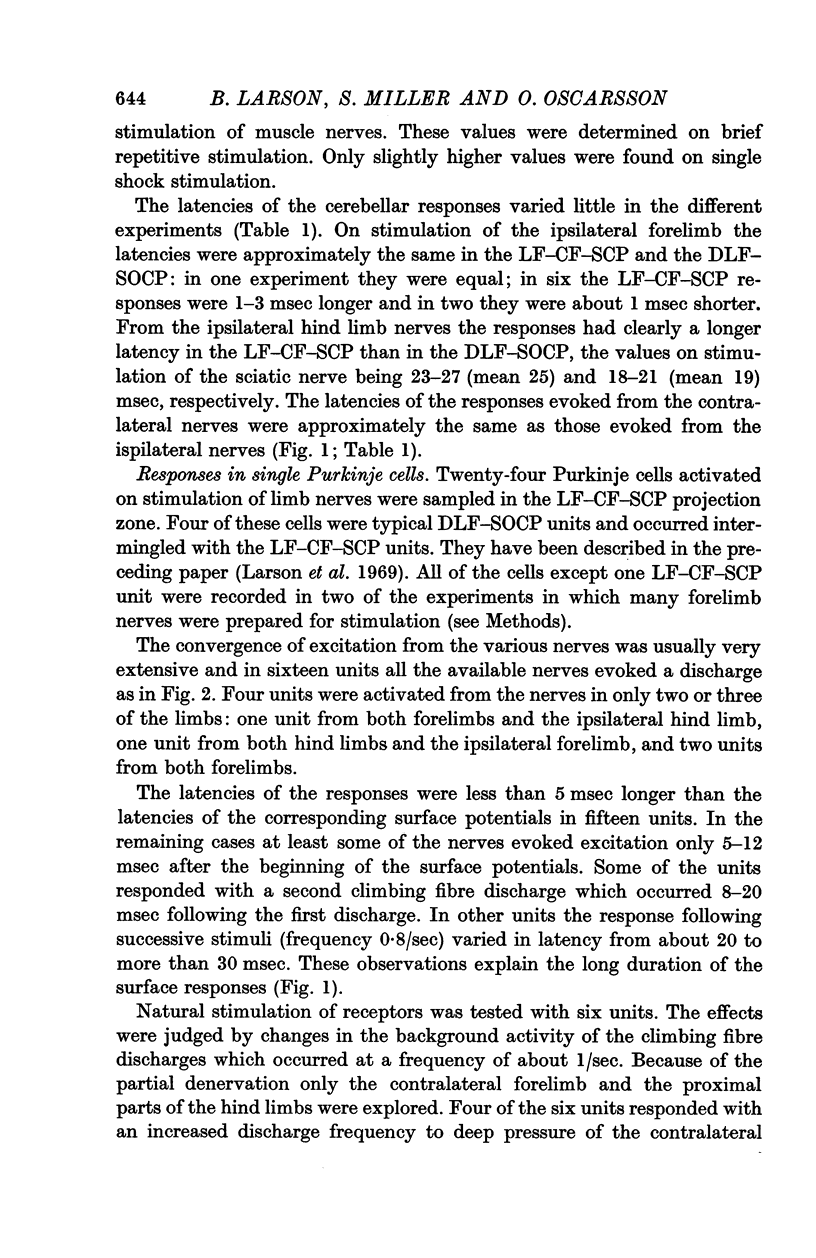
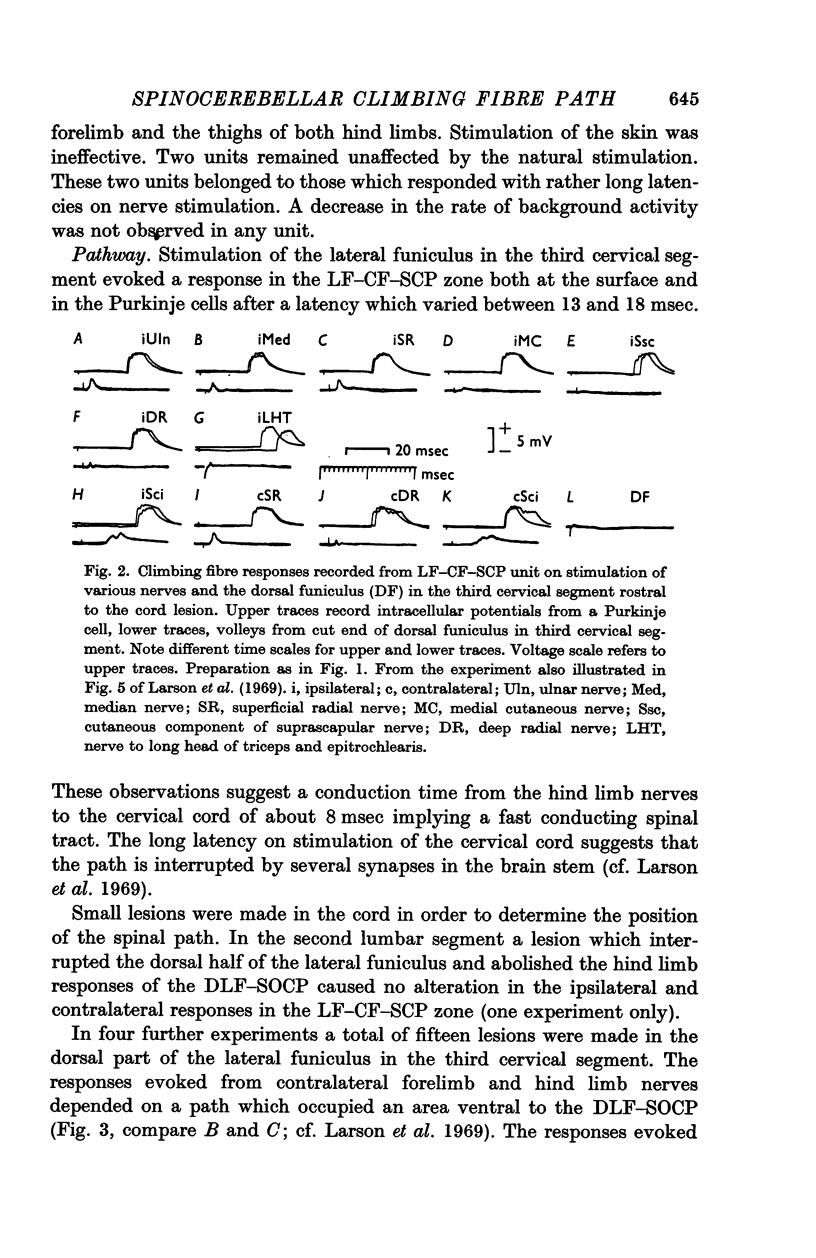
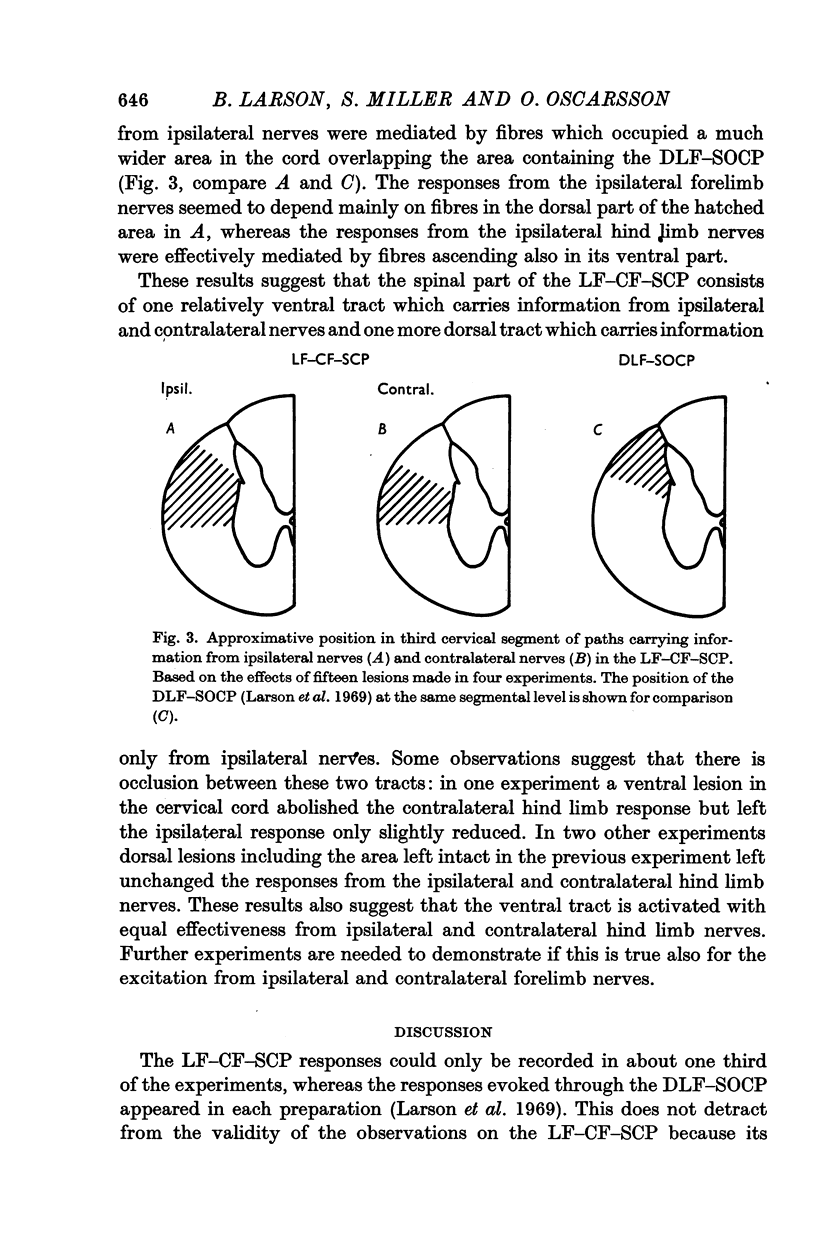
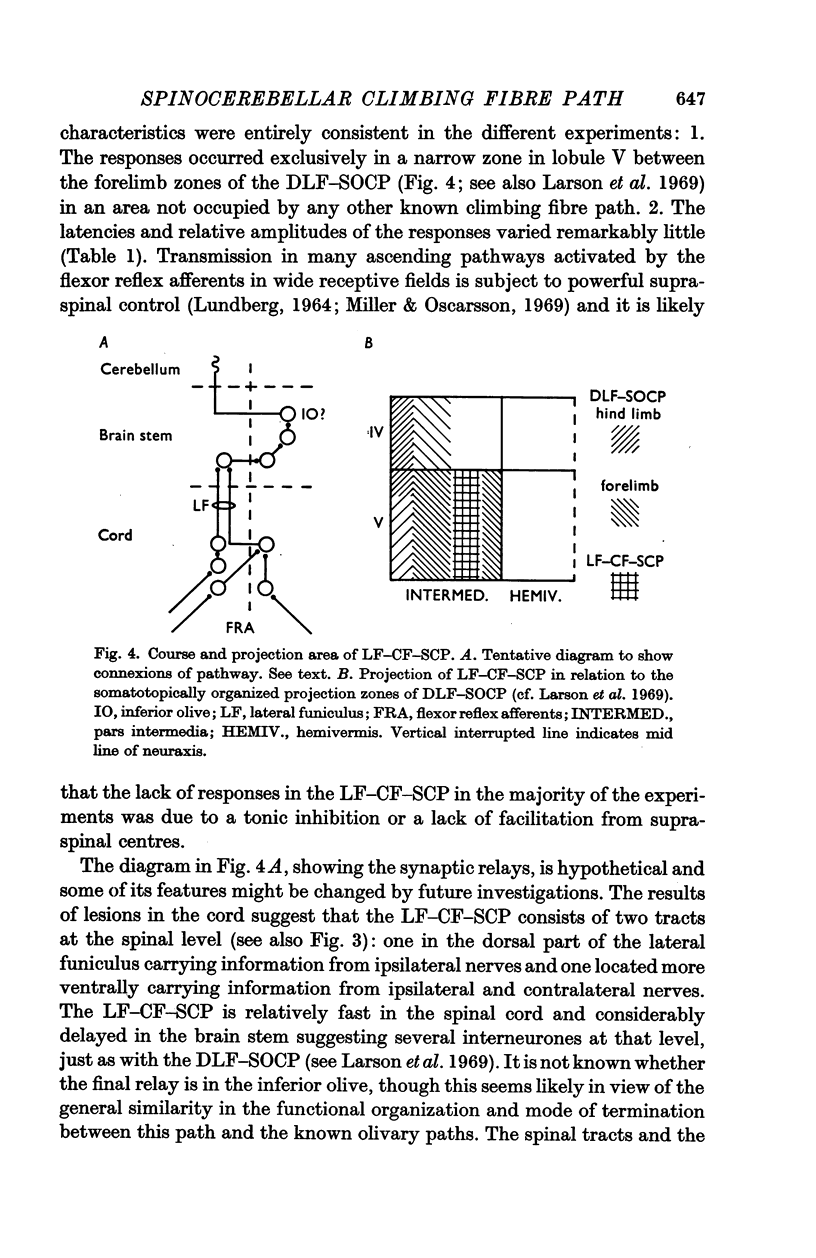
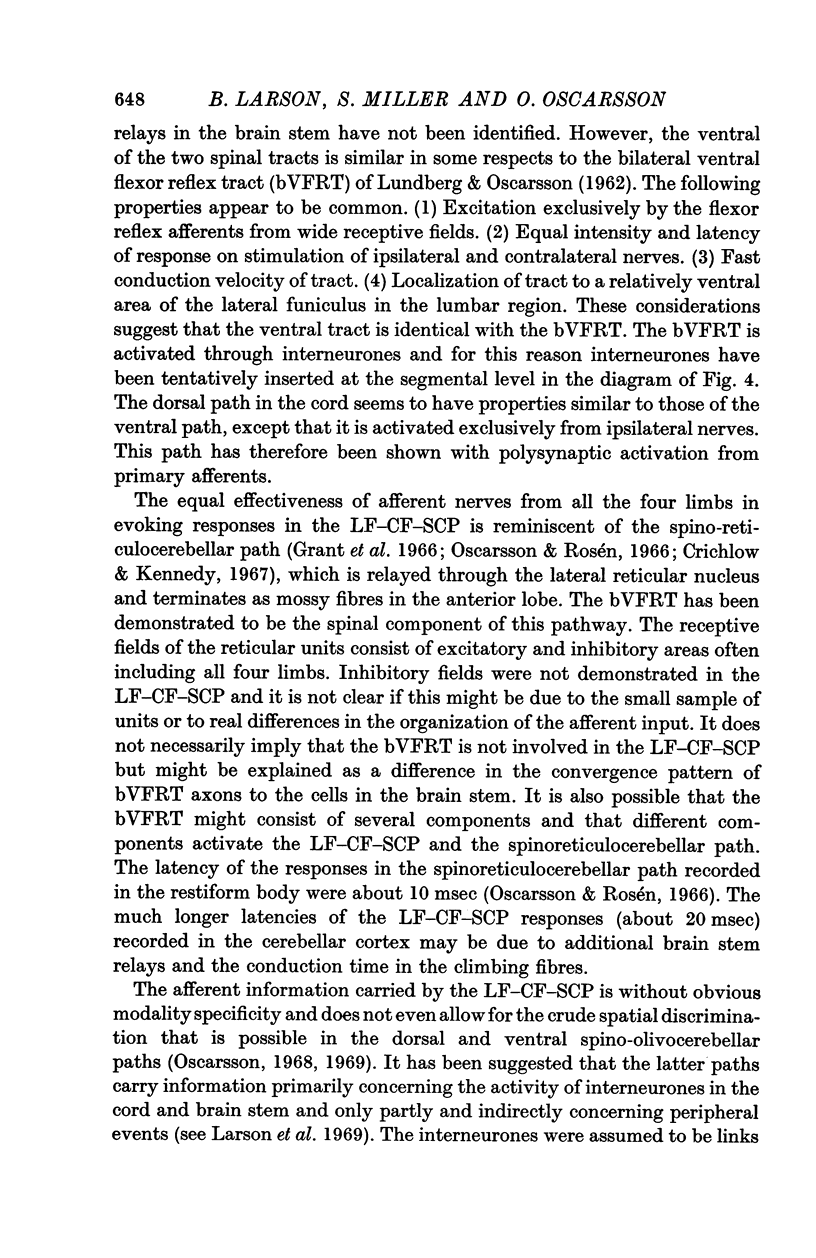
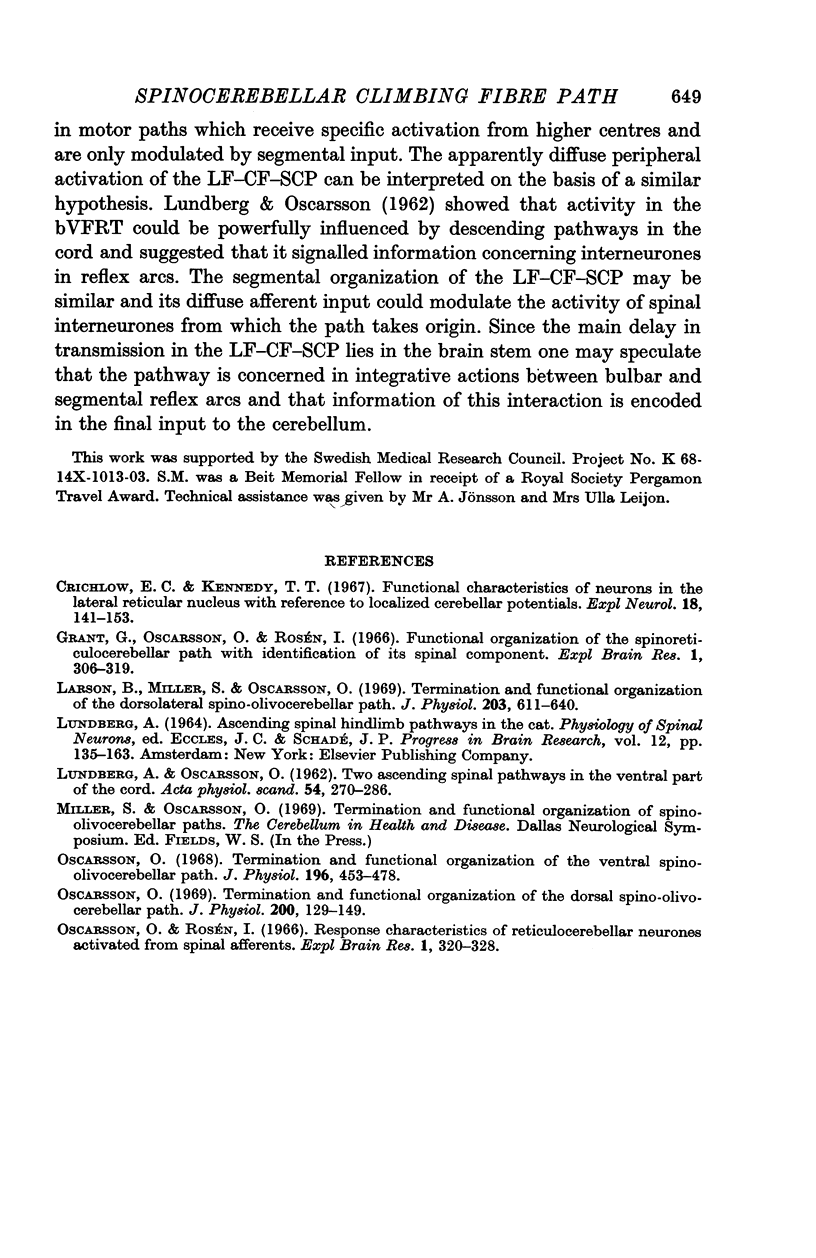
Selected References
These references are in PubMed. This may not be the complete list of references from this article.
- Crichlow E. C., Kennedy T. T. Functional characteristics of neurons in the lateral reticular nucleus with reference to localized cerebellar potentials. Exp Neurol. 1967 Jun;18(2):141–153. doi: 10.1016/0014-4886(67)90036-2. [DOI] [PubMed] [Google Scholar]
- Grant G., Oscarsson O., Rosén I. Functional organization of the spinoreticulocerebellar path with identification of its spinal component. Exp Brain Res. 1966;1(4):306–319. doi: 10.1007/BF00237703. [DOI] [PubMed] [Google Scholar]
- LUNDBERG A. ASCENDING SPINAL HINDLIMB PATHWAYS IN THE CAT. Prog Brain Res. 1964;12:135–163. doi: 10.1016/s0079-6123(08)60621-4. [DOI] [PubMed] [Google Scholar]
- LUNDBERG A., OSCARSSON O. Two ascending spinal pathways in the ventral part of the cord. Acta Physiol Scand. 1962 Mar-Apr;54:270–286. doi: 10.1111/j.1748-1716.1962.tb02351.x. [DOI] [PubMed] [Google Scholar]
- Larson B., Miller S., Oscarsson O. Termination and functional organization of the dorsolateral spino-olivocerebellar path. J Physiol. 1969 Aug;203(3):611–640. doi: 10.1113/jphysiol.1969.sp008882. [DOI] [PMC free article] [PubMed] [Google Scholar]
- Oscarsson O., Rosén I. Response characteristics of reticulocerebellar neurones activated from spinal afferents. Exp Brain Res. 1966;1(4):320–328. doi: 10.1007/BF00237704. [DOI] [PubMed] [Google Scholar]
- Oscarsson O. Termination and functional organization of the dorsal spino-olivocerebellar path. J Physiol. 1969 Jan;200(1):129–149. doi: 10.1113/jphysiol.1969.sp008685. [DOI] [PMC free article] [PubMed] [Google Scholar]
- Oscarsson O. Termination and functional organization of the ventral spino-olivocerebellar path. J Physiol. 1968 May;196(2):453–478. doi: 10.1113/jphysiol.1968.sp008518. [DOI] [PMC free article] [PubMed] [Google Scholar]


